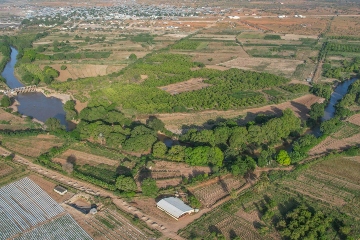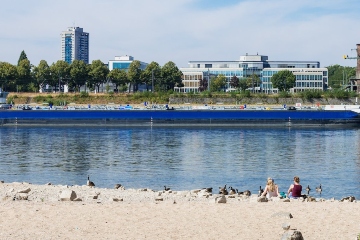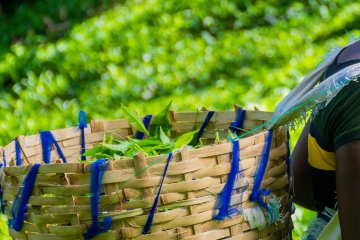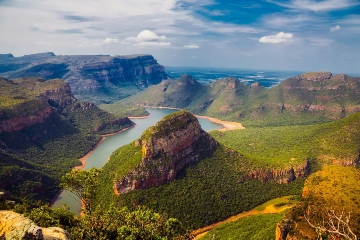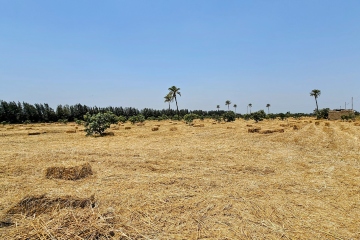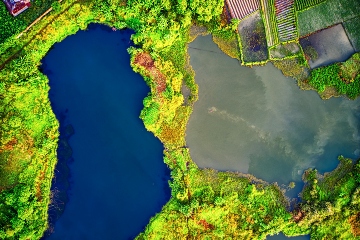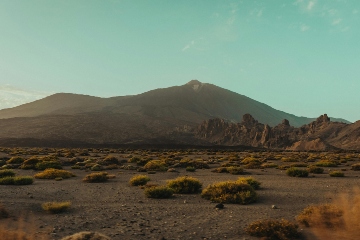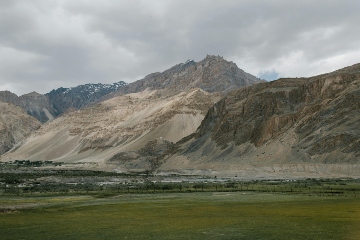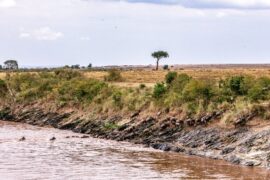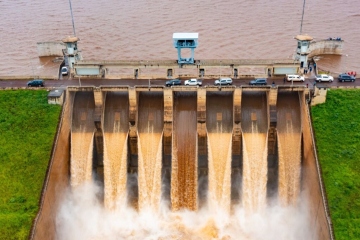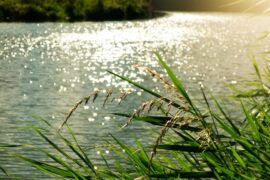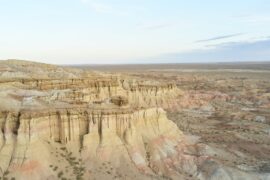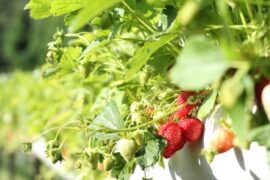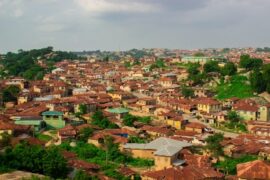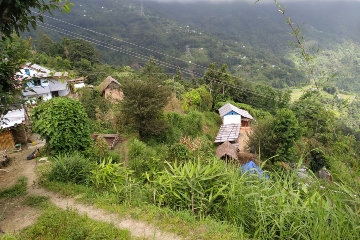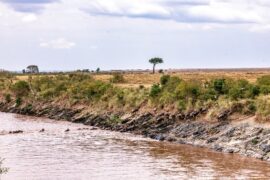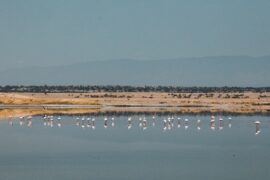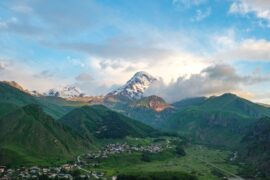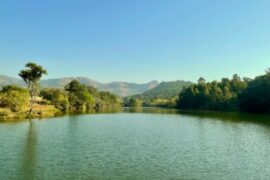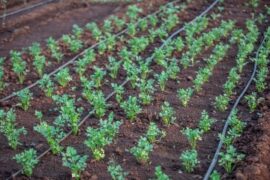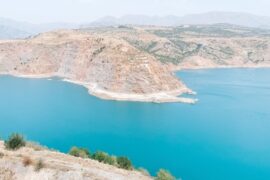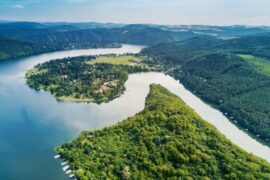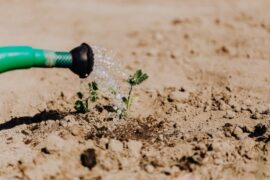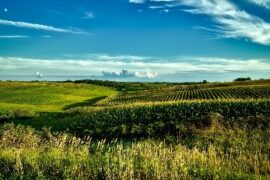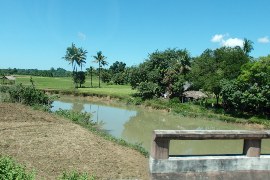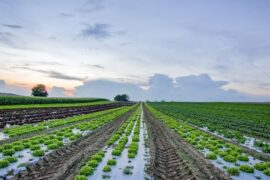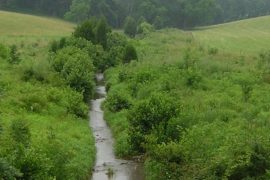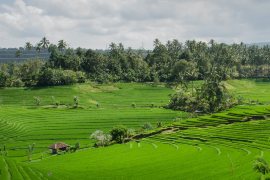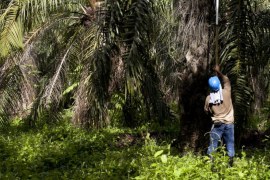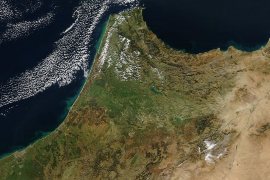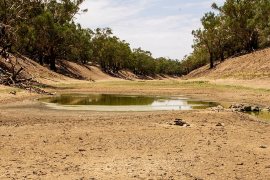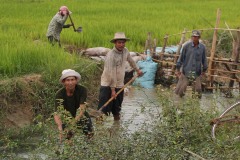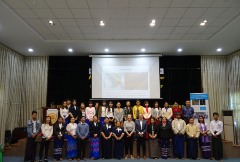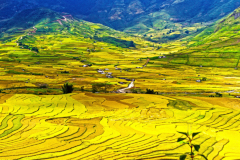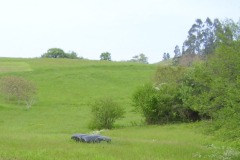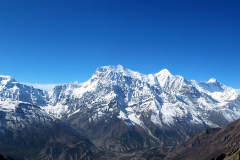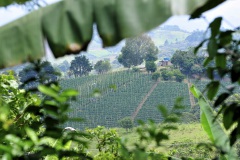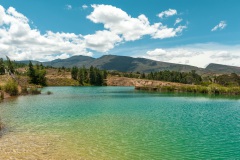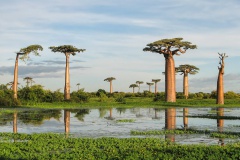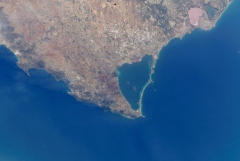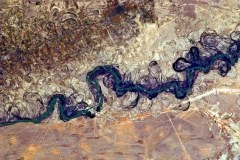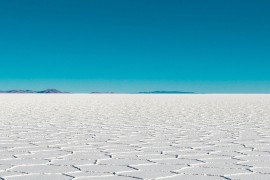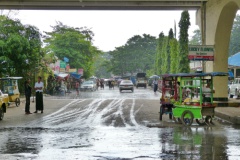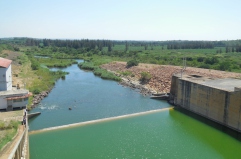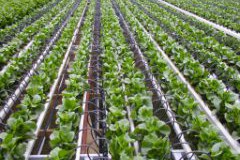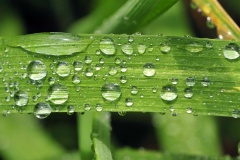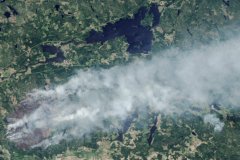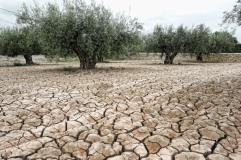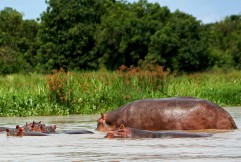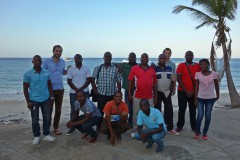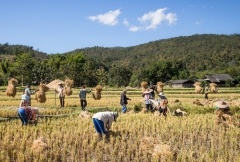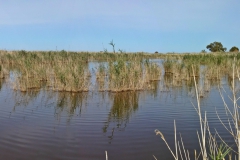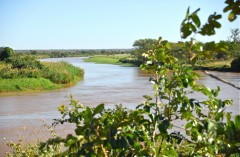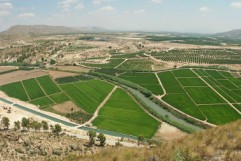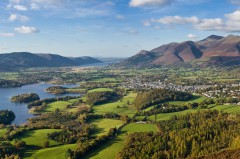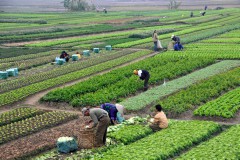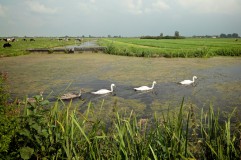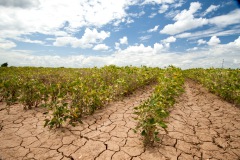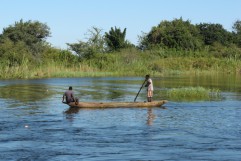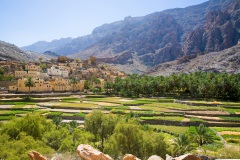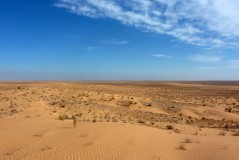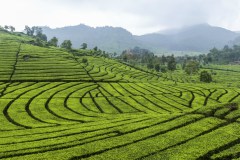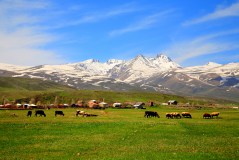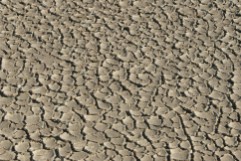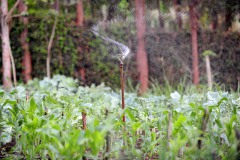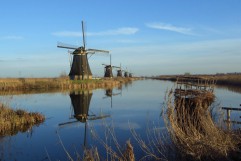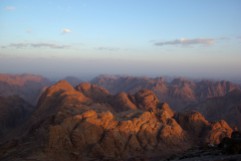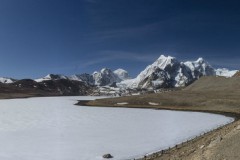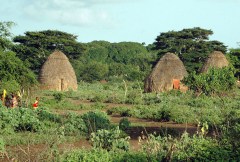Desafío
La ocurrencia de períodos de déficit de lluvia (sequías) combinados con los desequilibrios entre la disponibilidad de recursos hídricos y las altas tasas de explotación y consumo pueden poner en peligro la seguridad hídrica y alimentaria de muchas regiones del mundo. Esto es especialmente relevante en las regiones semiáridas y subhúmedas donde reside más del 40% de la población mundial. De acuerdo con los informes del IPCC, se espera que los riesgos provocados por estos fenómenos se intensifiquen debido al cambio climático y los escenarios de crecimiento de la población. La reducción de la vulnerabilidad de las economías regionales y locales mediante guías para la adopción de prácticas más sostenibles de uso del suelo y del riego, junto con mejores estrategias de asignación de agua, es la piedra angular del enfoque de FutureWater en su intento de promover una transición suave hacia economías más adaptativas y resilientes a los efectos del cambio global.
Enfoque FutureWater
El enfoque de FutureWater en materia de escasez hídrica y sequías pivota sobre dos pilares básicos:
- Brindar evaluaciones de riesgo climático y vulnerabilidad basados en enfoques novedosos y trasparentes (por ejemplo, el Marco de Árbol de Decisión desarrollado por el Banco Mundial) para identificar los principales impulsores de la escasez de agua y su papel en la generación de impactos socioeconómicos y ambientales Estos análisis son extremadamente útiles para informar sobre inversiones, priorizar actuaciones y asesorar sobre políticas de gestión y adaptación, y pueden abordarse en múltiples dominios espaciales, desde el nivel de parcela y distrito de riego hasta cuencas hidrográficas y grandes regiones.
- Desarrollar sistemas de soporte de decisiones que combinen herramientas operacionales de seguimiento de variables ambientales obtenidas de satélites y redes sociales, con capacidades de pronóstico estacional y de modelación hidrológica y asignación de agua, y los conocimientos científicos más avanzados en la materia. Los Sistemas de Soporte a la Decisión de sequía y escasez de agua de FW integran todos estos componentes en InfoSequia, una caja de herramientas desarrollada ad-hoc para optimizar el procesamiento de datos en la nube, y su consulta e interpretación de manera precisa, rápida y transparente para el usuario final.
Proyectos relacionados
-
I-DIP: Seguimiento, previsión y lucha contra las sequías repentinas en Pakistán
Las regiones de Pakistán están cada vez más expuestas a sequías repentinas, es decir, períodos de sequía que se desarrollan en cuestión de semanas y afectan gravemente a los cultivos y los medios de vida. Para reforzar la resiliencia, FutureWater y WaterSprint, en colaboración con el Centro Nacional de Vigilancia...
-
Modelo de predicción de la sequía en Somalia/Somalilandia
Este proyecto tiene como objetivo fortalecer la preparación y respuesta ante sequías en Somalia y Somalilandia, mediante el fortalecimiento de las capacidades técnicas y operativas de la Agencia Somalí de Gestión de Desastres (SODMA) y de la Autoridad Nacional de Preparación para Desastres y Reserva Alimentaria de Somalilandia (NADFOR). Bajo...
-
Asistencia técnica para la aplicación de la Estrategia Europea de Resiliencia ante el Cambio Climático
FutureWater colabora con la Comisión Europea como parte de un consorcio que proporciona asesoramiento técnico para la Estrategia Europea de Resiliencia Hídrica. En concreto, FutureWater aporta análisis científicos y relevantes para las políticas sobre la escasez de agua y las sequías, la eficiencia hídrica y la seguridad hídrica. Esto incluye...
-
Ventanas seguras de siembra para la horticultura en Ghana
¿Cómo saben los agricultores cuándo plantar sus semillas? En Europa, los agricultores se basan en datos meteorológicos de alta calidad para determinar las fechas óptimas de siembra. En África, sin embargo, las estaciones meteorológicas son escasas, lo que da lugar a predicciones de precipitaciones poco precisas. Esto es especialmente problemático...
-
WE-HARP: WEAP Permits Tool for ARA-Sul
FutureWater is carrying out an assignment to improve the WEAP-Permits Tool : WE-HARP, which supports ARA-Sul in evaluating water use licenses in the Pequenos Libombos area. This project builds on earlier efforts, refining the tool based on feedback from ARA-Sul’s technical professionals. By embedding the tool within ARA-Sul’s operations, FutureWater...
-
BUCRA: Construyendo Unidad para una Agricultura Resiliente al Clima
El proyecto BUCRA capacita a los pequeños agricultores del delta del Nilo en Egipto con prácticas agrícolas climáticamente inteligentes y herramientas digitales avanzadas. Utilizando Croptimal y SOSIA de FutureWater, el proyecto optimiza la selección de cultivos y la eficiencia del riego, abordando la escasez de agua y el cambio climático....
-
Motor de contabilidad del agua para apoyar la toma de decisiones en nexo WEFE
La toma de decisiones eficaz en la gestión de los recursos hídricos se ve a menudo obstaculizada por el uso fragmentado de diversos enfoques entre distintos sectores (agua, energía, alimentación y medio ambiente). Esta fragmentación conduce a datos incoherentes, ineficiencias, resultados contradictorios y dificultades en la planificación integrada. Para superar...
-
Water Accounting in Mongolia
Water Accounting offers data-driven insights into water availability, use, and allocation, helping policymakers balance demands across sectors like agriculture, industry, and urban development. It supports sustainable growth by ensuring efficient water use while protecting resources for the future. By accounting for different interventions and projections, it offers climate-resilient water resources...
-
NbS for Drought Resilience in Latin America
Under this project, FutureWater supports the World Bank to fill an existing knowledge gap regarding the applicability and potential effectiveness of Nature-based Solutions to reduce risks of droughts, with a focus on Latin America. A set of NbS factsheets and an inventory of useful tools were compiled by exploring a...
-
Climate Strategy Central and West Asia
The regional knowledge and support technical assistance project "Delivering a Climate Change Strategy for Central and West Asia" supports the delivery of a Climate Change Strategy and an Action Plan for Central and West Asia to strengthen integration of climate change considerations in Asian Development Banks (ADB) financed interventions in...
-
Monapo Catchment Water Allocation Model in Support of ARA-Norte in Mozambique
The aim of this project is to advance water system analysis for ARA-Norte, the regional water administration authority in Mozambique, focusing on the Monapo Catchment. In collaboration with ARA-Norte's hydrologists, we're crafting a Water Allocation Model employing the Water Evaluation And Planning (WEAP) system.
-
Climate Change Adaptation Scoping Assessment for Turkmenistan
The project aims to facilitate the identification and conceptualization of projects focused on climate adaptation, particularly enhancing resilience in Turkmenistan's water and agriculture sectors. This involves creating maps of climate-related hazards to engage with government and development partners. The mapped climate risks will serve as a foundation for discussions on...
-
Updating the Operational Water Allocation Model for the Pequenos Libombos Reservoir for ARA-Sul
This project supports ARA-Sul (Administração Regional de Águas do Sul) in the licensing of water users in the Pequenos Libombos Reservoir area, FutureWater, in a project commissioned by Blue Deal Mozambique, updated the operational WEAP water allocation model, originally developed in 2014, to reflect the 2023 water demand and hydrological...
-
Evaluación de la resistencia climática y análisis de inversiones en la cuenca del Limpopo
El objetivo principal de este estudio es llevar a cabo una revisión de los escenarios de desarrollo de los recursos hídricos considerados en el Limpopo Scoping Study (2010) y la Limpopo Monograph (2013), para producir escenarios actualizados de desarrollo futuro y evaluarlos en términos de beneficios sociales, económicos y ambientales,...
-
Sustainable Water Resources Management in Mongolia
In Mongolia, the continental semi-arid to arid climate of most of the territory results in low water availability, with the southern region particularly affected by a lack of perennial rivers and reliance on fossil groundwater reservoirs, where recharge is negligible. Climate change and increasing water demand are further threatening future...
-
Catchment Assessment for Water Stewardship Plan
Highly productive berry farms and water scarcity are causing conflicts with the environmental assets and values of the Doñana National Park, Spain. There is growing interest in the agricultural sector to reverse this situation by implementing a water stewardship program. A catchment assessment is needed to produce baseline information to...
-
Pre-Feasibility Work to Identify Nature-based Solutions for Multiple Catchments in Nigeria
This project will involve working across two fee-for-service engagements with the Coca Cola Corporation and Diageo in Nigeria. The identification and prioritisation of NbS for implementation will be achieved through the development of three key products: two prefeasibility analyses for Ogun and Oshun catchments, and a high-level country-wide strategic assessment...
-
RoSPro: Roadside Spring Protection to Improve Water Security in Nepal
Las zonas de altitud media y alta del Himalaya se enfrentan a un grave problema de escasez de agua, lo que las convierte en una de las regiones más vulnerables del mundo. Los manantiales son salvavidas esenciales para millones de comunidades de montaña, ya que constituyen la principal fuente de...
-
Water Evaluation And Planning Training for the Umbeluzi Catchment
ARA-Sul is improving their decision-making procedures. One component is improved water allocation planning. FutureWater has developed for the Umbeluzi two Water Allocation Models (WAMs) in 2014. A refreshing workshop for water managers and decision makers was held in June 2023.
-
WEAP Ground Water Modelling in Mozambique
Groundwater availability is critical to the Umbeluzi Catchment. Currently, there is a need for a simple tool that can asses the availability of resources in the ground. This especially to asses the permits for groundwater extractions. It is expected that a simplified modelling approach can provide a trend analysis sufficient...
-
Developing the CAREC Water Pillar: Climate Change Assessment for Georgia
The Central Asia Regional Economic Cooperation (CAREC) Program has initiated the development of a Water Pillar, an investment mechanism aimed at enhancing water infrastructure and capacity development to generate regional benefits. Expanding from the initial scoping study conducted for the five Central Asian countries in 2021, this project now shifts...
-
GLOW: Global Water Availability Forecasting Service to Support Water Security
The GLOW project aims to pilot an operational service that provides timely and easy access to current and forecasted water availability and demand across the entire Maputo River and the Black Umbeluzi River Basins.
-
MAGDA: Meteorological Assimilation from Galileo and Drones for Agriculture
El proyecto MAGDA tiene por objeto proporcionar un sistema integrado, aunque modular, de predicción de condiciones meteorológicas adversas y avisos de riego mejorados mediante diversas tecnologías de observación meteorológica desde satélites, drones y tierra. Las principales aplicaciones consistirán en alertas sobre condiciones meteorológicas adversas que puedan afectar a los cultivos...
-
Strategic Climate Adaptation Planning for the Amu Darya Basin in Uzbekistan
Uzbekistan's water resources depend to a large extent on those provided by the transboundary Amu Darya river which are fully allocated and highly sensitive to climate change and water demand and management changes. Especially the agricultural sector, but also the energy and urban water supply sector need to transform into...
-
SOS-Water: Water Resources System Safe Operating Space in a Changing Climate and Society
El objetivo del proyecto SOS-Water es establecer los límites dentro de los cuales la capacidad del paisaje para proporcionar servicios ecosistémicos no esté en peligro y la capacidad de la sociedad para adaptarse a los cambios ambientales no esté sobrecargada. Cruzar esos umbrales o puntos de inflexión en el complejo...
-
BONEX: Boosting Nexus Framework Implementation in the Mediterranean
BONEX es un proyecto financiado por la Fundación PRIMA-UE específicamente para la región mediterránea. Esta región se enfrenta a varios retos para garantizar la seguridad futura de los alimentos y el agua, preservando al mismo tiempo los ecosistemas. BONEX explora y desarrolla soluciones específicas que promueven la vinculación de la...
-
Identificación de hotspots de degradación de tierras y riesgo climático
This projects entails a risk assessment of selected value chains in the context of progressing climate change which is expected to impact on degradation processes in dryland agriculture over the next decades. A global-scale assessment of the potential impact of climate change on land degradation is performed. Per-country estimates of...
-
Advancing the Monitoring of Water-Related SDGs in Myanmar: an Issue Brief
This assignment entails the write-up of an issue brief on SDG 6 monitoring in Myanmar with Earth Observation (EO) technologies. Based on the status of data availability in Myanmar and the potential of innovative technologies and datasets, examples are given of how current knowledge gaps can be addressed. In addition,...
-
CREATE: Cross-Border Climate Vulnerabilities and Remote Impacts of Food Systems of the EU, Turkey and Africa
Knowledge and research on cross-border climate vulnerabilities and impacts of a geographic area is still a new topic in scientific literature. Nowadays, climate risk and impact assessments of food-systems focus typically on the production within a geographic area only. Consequently, knowledge and research on the cross-border climate vulnerabilities of food-systems...
-
Technical Annexes on Nature-based Solutions for Water Security
The Nature Conservancy (TNC) is producing technical modules and guidance documentation to enable water sector actors and their funders to invest in Nature-based Solutions for Water Security (NbS-WS). Part of the material being developed is a module on technical options, which will include annexes with key information for each of...
-
HiHydroSoil v2.0: Global Maps of Soil Hydraulic Properties at 250m Resolution
In 2016, FutureWater released a new dataset: HiHydroSoil v1.2, containing global maps with a spatial resolution of 1 km of soil hydraulic properties to support hydrological modeling. Since then, the maps of the HiHydroSoil v1.2 database have been used a lot in hydrological modeling throughout the world in numerous (scientific) projects. A few examples of...
-
Climate Risk Screening: Water Availability Indonesia
Indonesia is planning to use its water resources more extensively. Drinking water, irrigation and environmental flow requirements should be served and the baseline of how much water is available currently and under climate change should be known. FutureWater has developed a climate risk screening approach, based on a rapid assessment,...
-
Riego eficiente de palma aceitera en Colombia
Este proyecto es un estudio de factibilidad sobre la adopción de técnicas de riego más eficientes por parte de los productores de palma aceitera en la cuenca del río Sevilla, una de las cuencas más relevantes en la Sierra Nevada, Colombia. El objetivo general es identificar el entorno local a...
-
Creating a Bias Corrected, Downscaled Climate Model Ensemble to Provide Future Climate Change Projections for Morocco
This project involved downloading and bias correcting Regional Climate Model (RCM) outputs from the EuroCordex ensemble. Firstly, RCM outputs were downloaded from the ESGF database and postprocessed to a standardised grid and time representation. Subsequently, bias correction was performed using a quantile mapping approach and ERA5-Land as the reference observational...
-
InfoSequia-4CAST: Forecasting and Quantifying Risks of Crop and Water Supply Failures Using Machine Learning and Remote Sensing
InfoSequia-4CAST combines historical and up-to-date observations of satellite-based meteorological and agricultural drought indices with climate variability indices, to generate seasonal outlooks of water supply and crop yield failure alerts. These impact-based indicators are computed using a simple, robust and easily understandable statistical forecasting-modelling framework. By making use of multi-sensor, state-of-the...
-
Transboundary water management between Thailand and Cambodia
Transboundary projects aid the development of effective water resource management (WRM) by helping to limit competition over resources and in creating a dialogue for the transferral of beneficial lessons between the countries. This project takes an integrated approach to support the development of a water resource management plan for a...
-
Tailor-Made Training for water professionals in Myanmar
This tailor-made training enhanced capacity of Yangon Technological University (YTU) educational staff in using Google Earth Engine to analyse water resources and support water management. Technical staff of Department of Meteorology and Hydrology (DMH) and the Department of Water resources and Improvement of River systems (DWIR) also participated to gain...
-
Training Package and Technical Guidance for Water Productivity and Real Water Savings
The overall project objective is to compile an inventory of agricultural field interventions and develop a training package to evaluate Real Water Savings from irrigated fields, to systems and basins. A guidance document is developed for agricultural field interventions by compiling a literature database containing published experiences and results of...
-
Seguimiento operacional del estado de las praderas del Valle del Alagón mediante índices de satélite
Este proyecto se enmarca dentro de las actividades asistencia técnica que FutureWater provee al Grupo Operativo ECOPRADERAS. FutureWater tiene la encomienda de desarrollar una herramienta operacional para la evaluación del estado vegetativo de las praderas de la Vega del Alagón (Extremadura) mediante el seguimiento de indicadores satelitales y el análisis...
-
Pan-TPE: Changes in the Pan-Third Pole Water Tower
The proposed research targets changes in climate, water supply and demand, and suitable adaptation measures for green development of the Silk Road Economic Belt (SREB) in the river basins crossed by the SREB transect. Given the strong role of large scale hydrology in the proposed research activities, the spatial domain...
-
SMART-WADI: SMART WAter Decisions for Iran
The SMART-WADI project (SMART Water Decisions for Iran), carried out by a consortium of FutureWater, IHE-Delft, and local partner EWERI, focuses on farmers who irrigate their crops with groundwater. The aim is to provide up-to-date information and advice on water productivity, irrigation and farm management. The project combines the latest...
-
TWIGA: Transforming Weather Water data into value-added Information services for sustainable Growth in Africa
TWIGA aims to provide actionable geo-information on weather, water, and climate in Africa through innovative combinations of new in situ sensors and satellite-based geo-data. With the foreseen new services, TWIGA expects to reach twelve million people within the four years of the project, based on sustainable business models. The TWIGA...
-
HERMANA: Herramienta para el Manejo Integral del Agua
HERMANA (Herramienta para el Manejo Integral del Agua), tiene como objetivo fomentar el desarrollo de un Sistema Integrado de Apoyo a la Toma de Decisiones en materia de recursos hídricos, que facilite la toma de decisiones diarias, tácticas y estratégicas relacionadas con los recursos hídricos en Colombia, específicamente en la...
-
LAUREL: Land Use Planning for Enhanced Resilience of Landscapes
Deforestation, population growth, and climate change are only some of the challenges to sustainable landscape management in Madagascar. Severe impacts of land degradation on crop production, water availability and biodiversity are already observed and expected to exacerbate in the future. To address these challenges, the World Bank is supporting the...
-
Cuantificación de la descarga subterránea al Mar Menor
La descarga subterránea procedente de los retornos de riego de origen agrícola hacia el Mar Menor se encuentra entre una de las posibles causas que explican los altos niveles de eutrofización (hipereutrofización) y elevada proliferación de algas alcanzados en este ecosistema lagunar. Una de las alternativas planteadas para reducir las...
-
Climate Resilient Water Supply System for Uzbekistan
Uzbekistan is upgrading and further developing its domestic water supply system in the western part of the country (Republic of Karakalpakstan). Tthe water supply system must be full climate proof in design and operations. The Green Climate Fund (through the Asian Development Bank) will be asked to finance the climate...
-
DRR: Technical Assistance on Drought Information and Early Warning Systems
To address the recent drought problems in Bolivia, FutureWater and Deltares have been asked to provide recommendations on drought early warning and drought information systems, both on technical aspects as well as on institutional issues. The Dutch Risk Reduction Team has held stakeholder consultations with the Ministry of Environment and...
-
Leapfrogging Delta Management: Showcase operational rainfall monitoring
Significant decisions are to be made to manage and engineer the water systems in Myanmar and to develop large structural and non-structural projects (e.g. hydropower dams, urban water use, industrial development, extension of irrigation capacity, operational quantity and quality management, etc.). The Myanmar and Dutch governments have agreed to cooperate...
-
DAISY2: Daring Applications and Innovations in Sensor sYstems
DAISY2 builds on the success of the DAISY project in which a compact and mobile sensor system was developed aimed at different socio-economic applications like e.g. security, life-sciences, transport, logistics, and agro-food. Within DAISY2 we aim to further develop this sensor system and explore the viability of this products for...
-
Capacitación técnica en modelización de recursos hídricos para las agencias de gestión del agua de Mozambique
Se implementó un programa de capacitación teórico-práctica diseñada a medida para fortalecer el conocimiento del personal técnico de las agencias del agua de Mozambique (ARA) y fortalecer su capacidad para asesorar a los tomadores de decisión y políticos del agua. La capacitación abarcó los conceptos teóricos sobre modelado hidrológico y...
-
BRIGAID: BRIdging the GAp for Innovations in Disaster resilience
Los estudios publicados recientemente por el Panel Intergubernamental del Cambio Climático (IPCC) indican que Europa estará sometida a un mayor número de eventos hidroclimáticos extremos (inundaciones, sequías, olas de calor e incendios forestales). Sin embargo, estos estudios también identifican un gran potencial para que la comunidad científica, inversores y las empresas innoven, impulsen e implementen...
-
Water2Invest Regional Demonstrator
To adapt to a changing climate governments, regional development banks, international donors and investors require information on where adaptation measures are most effective and most feasible in a specific context. To make information more easily accessible to end users, the Climate-KIC innovation project Water2Invest developed an offline and online tool....
-
Using satellite data for wildfire mitigation
Wildfire models, that can predict wildfire dispersion, play an important role in mitigating wildfires. In this project FutureWater developed a product that achieved a significant improvement in the spatial representation of environmental factors relevant to the wildfire model that is used in the Netherlands. The Wildfire component of the SVIPE...
-
IMPREX: Mejora en la predicción y gestión de los eventos hidrológicos extremos
IMPREX parte de la base de que mejorar la comprensión de los riesgos actuales es un punto de partida eficaz para adaptarse a los cambios futuros. Teniendo en consideración las posibles trayectorias climáticas y la experiencia obtenida a lo largo de un conjunto de sectores fuertemente dependientes del agua, IMPREX evaluará la efectividad de las...
-
Preliminary Study for a Payment for Watershed Services Scheme
This project pilots a Payment for Watershed Services (PWS) scheme in the Rwenzori Mountains National Park (RMNP) in Uganda. The goal of the pilot is to study the feasibility of the PWS scheme in the watersheds of the Mubuku and Nyamwamba rivers and supporting nature conservation and a healthy watershed...
-
Training in Water Resources and Allocation Models
A Tailor-Made Training was provided to three ARAs in Mozambique, being ARA-Centro (Beira), ARA-Centro-Norte (Nampula), and ARA-Norte (Pemba). The provided Tailor-Made Training focused on learning to work with a Water Resources and Water Allocation Model, and apply them to a catchment in Mozambique. Emphasis was put on how these tools...
-
Inclusive Development Paths for Healthy Red River Landscapes
Rapid land use changes in the Red River Basin threaten water resources. This project will be working in the Day River Catchment, a Red River distributary important for Hanoi, where most of these problems are manifest. The project will develop equitable and economically viable pathways for the land and water...
-
Fresh Water Options Optimization
This project identified opportunities for innovative solutions that decrease local fresh water shortages in economic vulnerable regions under increasing water stress (droughts, salinization). The project demonstrated the business potential of fresh water solutions for a case study area with intensive agriculture within the Valencia region, Spain. FutureWater’s role in this...
-
Water Allocation Model Development to Support Decision Making Procedures
Two water allocation models were developed in this project as a tool to support policy evaluation and improve strategic and operational decision making procedures of ARA-Sul, which is one of the five water management organizations in Mozambique. WEAP (Water Evaluation And Planning) was chosen as modelling framework. Different scenarios were...
-
ASSET: Sistema de Contabilidad Ambiental y Económica del Agua en la Cuenca del Segura
Frente a un escenario caracterizado por una demanda creciente de recursos hídricos y una mayor presión sobre las masas de agua y los ecosistemas asociados, la Directiva Marco del Agua (DMA) exige a los estados miembros de la Unión Europea el desarrollo de Planes Hidrológicos de Cuenca en los que se cuantifiquen los balances de...
-
OWASIS-UK: Observatory of Water Availability – System of Integrated Services
The main objective of this study is to explore the potential to combine optical and gravity data from Earth Observation with meteorological data, together with innovative in situ sensors, hydrological modelling and crowd sourcing technologies, and the advanced visualization of the information through situation awareness platforms and decision support tools,...
-
Water and Climate Services for Transboundary Water Management and Disaster Risk Management
During this pilot project the applicability of the in-house developed Drought Monitoring and Impact Assessment Toolbox (DMIAT) and HiP2P rainfall downscaling methodology were demonstrated for the Red River Basin in Vietnam. Furthermore the first steps in developing an integrated product for transboundary water management in the Red River Basin were...
-
SWIMM: Soil Water evaluation system based on Integrated Measurements and Modelling
The main objective of the project was to support policy making, under current and future climate conditions, on optimal water management in nature reserve areas, based on uniform and consistent data collection. The project built upon knowledge developed under the “Klimaat voor Ruimte” framework and refined and demonstrated a method,...
-
GEISEQ: Sistema Multiherramienta para la Gestión Integral de Sequías
Las sequías son periodos transitorios en los que los valores de precipitación son inferiores a los considerados normales o promedios. El término sequía es un concepto relativo cuya definición depende del dominio geográfico y del ámbito de afección que se considere. Las sequías pueden ser meteorológicas cuando se asocia a escasez de precipitaciones, agronómicas cuando...
-
Water Planning Tools to Support Water Governance
ARA-Centro is one of the five regional water management organizations in Mozambique and has to advise on the water availability and the required number of reservoirs that are needed to make the envisioned economic developments possible. For this advisory role, tools are needed like a water allocation model that can...
-
Review of the First Hydroponic Greenhouses Project at Barka, Oman
Oman is one of the world’s most arid countries where water availability fully relies on groundwater resources and desalinization plants. The average annual rainfall depth has been estimated is around 60 mm, varying from less than 20 mm in the internal desert regions to over 300 mm in the mountain areas. This rainfall on mountain...
-
Green Water Credits demonstration project Algeria
In cooperation with Algerian partners the “La Mina” basin was selected to demonstrate the potential for Green Water Credits (GWC) in Algeria. GWC can be seen as an investment mechanism for upstream farmers to practice soil and water management activities that generate benefits for downstream water users, which are currently...
-
Water2Invest: Climate Investment Support Portal
In this project a web-based service was built from which it is possible to select a country or region on a global map, calculate the current water availability from surface water and groundwater as well as current water demands from the three sectors (agriculture, industry, domestic) and to assess from...
-
Towards a Mekong Delta Portal
Studies have shown that the Mekong Delta is very vulnerable to floods and droughts, which will intensify due to climate change. Currently, these threats are not adequately monitored and information on such threats is inconsistent and only scattered available. Therefore Vietnam is in need of data sharing systems and advanced...
-
Mainstream Climate Change Adaptation and Mitigation Into Agriculture in the Southern Caucasus
This study contributes to the agriculture sector climate change impact assessment and adaptation and mitigation strategy identification and evaluation. The study encompasses the three countries of the Southern Caucasus region: Armenia, Azerbaijan, and Georgia. The project also includes components for capacity building among in-country staff, and support of the World...
-
DMIAT: Drought Monitoring and Impact Assessment Toolbox for Vietnam
In this project a Drought Monitoring and Impact Assessment Toolbox (DMIAT) was developed for Vietnam in order to support their drought policy. A DMIAT is a combination of remote sensing, models, and decision trees. The DMIAT will help Vietnam to better understand past and current droughts, and how to act...
-
SIRRIMED: potenciar el uso sostenible del agua mediante la mejora de las técnicas de riego y el desarrollo de herramientas de gestión
El proyecto “Sustainable use of irrigation water in the Mediterranean Region” (SIRRIMED) es un proyecto europeo de cooperación del VII Programa Marco, enmarcado en la temática “Alimentación, Agricultura, Pesca y Biotecnologías”, que cuenta con un presupuesto superior a 4 millones de euros, y en el que participan quince socios de ocho países distintos: España, Italia,...
-
Climate Adaptive Drainage
The concept of Climate Adaptive Drainage is such that regional-scale water managers and local-scale farmers co-operate on the drainage system, in order to use the farm-scale soil system as an optimal water storage system. By using the local-scale soil as a water storage reservoir during rainfall events, current peak discharges...
-
Application of Remote Sensing in National Water Plans: Demonstration cases for Egypt, Saudi-Arabia and Tunisia
In the Middle-East, where water is extremely scarce national water plans are considered as a means to improved water resources planning, but the plans are often based on limited information and data and are always very much focused on water in rivers and groundwater, rather than considering all the components...
-
Hydrological seasonal forecasts in mountaineous basins
This project focused on the hydrology and cryosphere of the Himalayas and dealt with the influence of snow cover of the Himalayas and the Tibetan plateau on Asian monsoon dynamics, and the possibility to forecast the strength of the monsoon and the hydrological effects in downstream areas.
-
Needs Assessment of Future ESA Satellites for Water Management in Southern Europe
At the beginning of the 21st century various tools based on Remote Sensing (RS) techniques from satellites to assist land management were developed. Yet, there were no real products dedicated for water management applications. However, around 2005 an increasing number of Remotely Sensed datasets and algorithms relevant to water managers...
-
Green Water Credits Mechanism to support sustainable water use in Africa
Green Water Credits can be seen as an investment mechanism for upstream farmers to practice soil and water management activities that generate benefits for downstream water users, which are currently unrecognized and unrewarded. FutureWater coordinated and carried out the biophysical assessment that quantified the impact of Green Water Credits practices...


